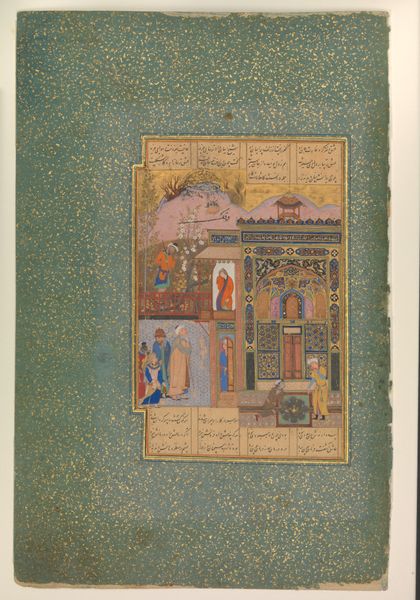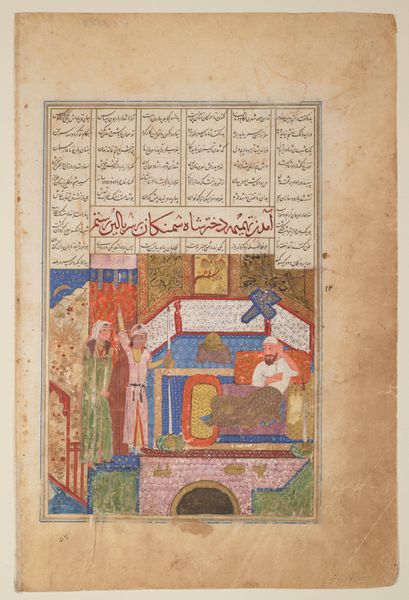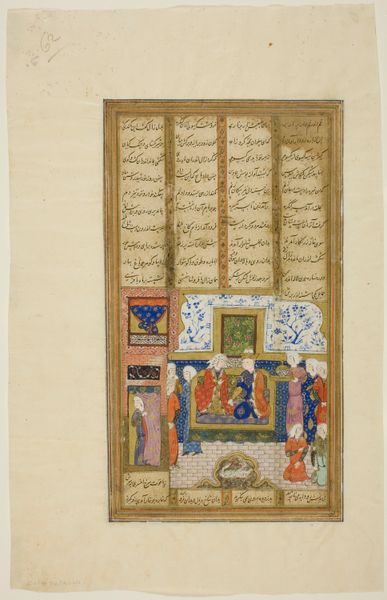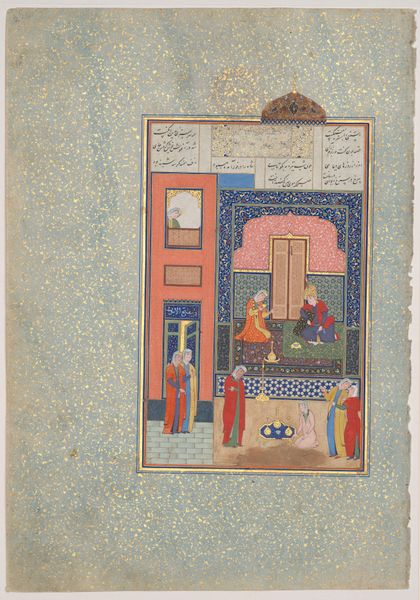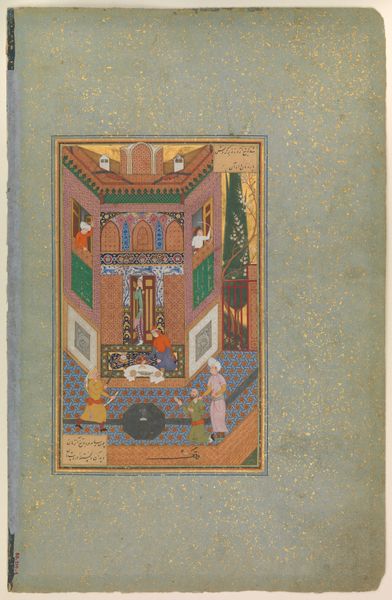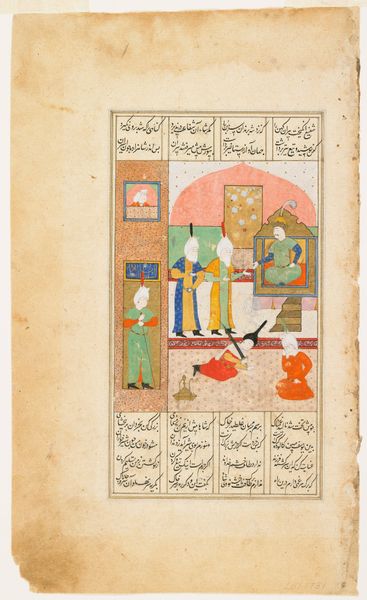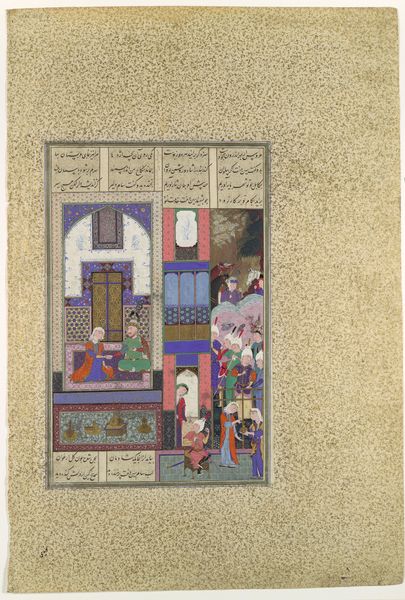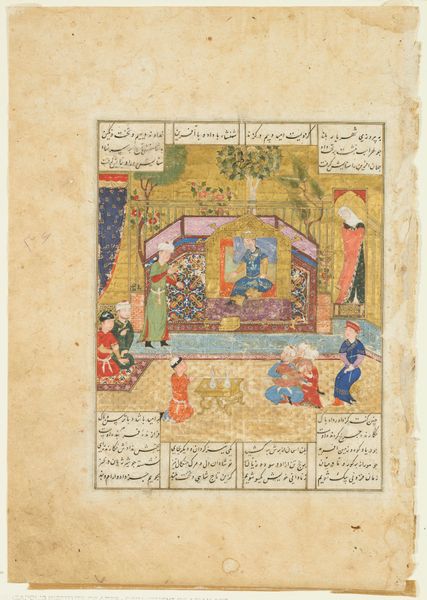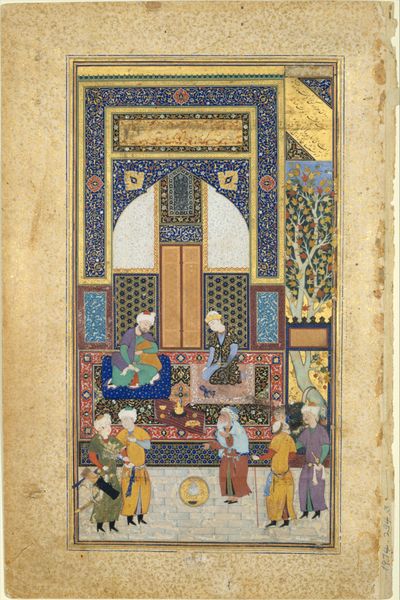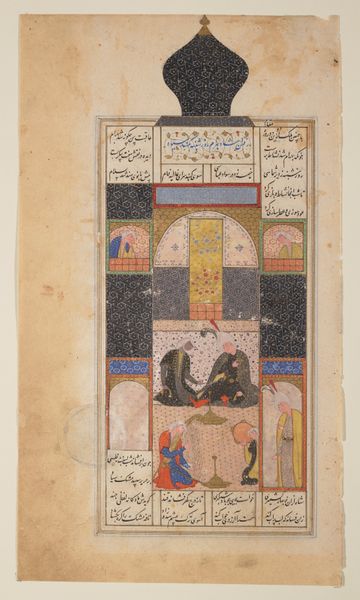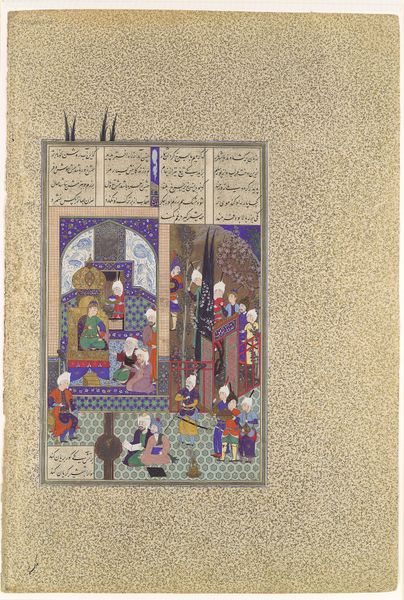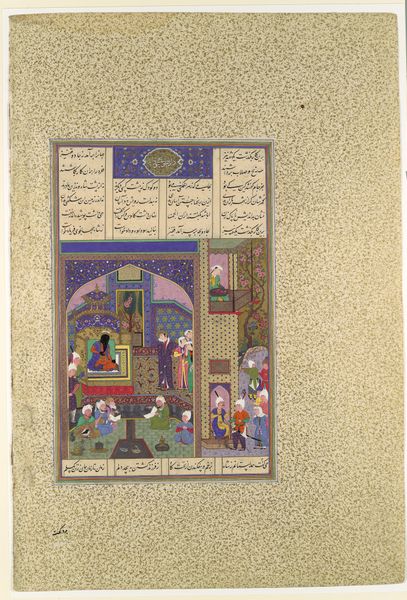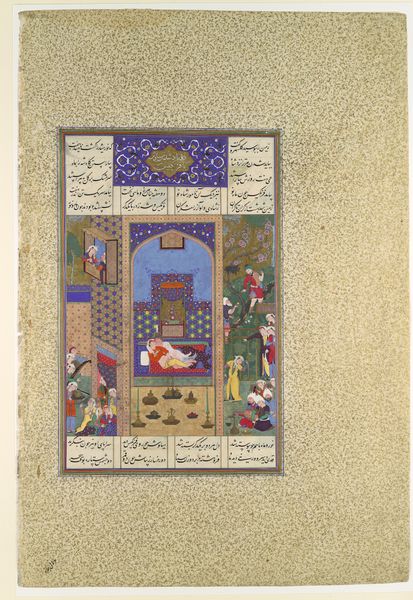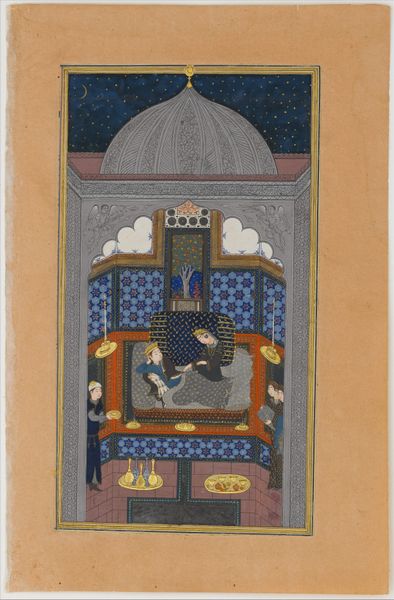
painting, watercolor
#
medieval
#
water colours
#
narrative-art
#
painting
#
asian-art
#
figuration
#
watercolor
#
islamic-art
#
watercolour illustration
#
miniature
#
watercolor
Dimensions: 8 3/4 x 5 3/4 in. (22.23 x 14.61 cm)
Copyright: Public Domain
Curator: Welcome. We're looking at "al-Mam’un Proposes Marriage," a watercolor miniature painting from the Baysunghur school, circa 1431. It resides here at the Minneapolis Institute of Art. Editor: The scene feels immediately formal and staged. Everything seems to have its prescribed place. Curator: Note how the vibrant watercolor pigments interact with the paper, creating luminous details. The materiality of the artwork is particularly revealing: the layering of colors, the brushstrokes… It speaks of artistic labor under specific conditions, a workshop maybe, carefully managing precious materials. Editor: I am most drawn to the division of space—the rigid architecture that creates separation while connecting the subjects. The use of flat color creates this intricate, ornamental composition, very captivating. It flattens perspective, bringing everything to the forefront. Curator: Precisely. This "flattening" invites us to consider the socio-political context. These miniatures were often commissioned to visually reinforce the ruler’s narrative— a very intentional form of cultural production for display of status. What sort of access would someone have to this artwork, for what purpose was it created? Editor: Looking more closely at the narrative elements of the artwork: The scene itself appears to show an intimate but restricted setting. Both are kneeling with different gestures; their bodies forming an intentional line which reinforces hierarchy in its design. Curator: And there's the inscription below. It directly contributes to understanding not only its visual design but how the artwork communicates a particular, and likely state-sponsored, meaning. It certainly informs how the proposal ought to be perceived, perhaps emphasizing al-Mamun’s virtues. Editor: So, we start with the aesthetic qualities: color, form, structure, narrative... yet discover political intent behind each deliberate formal arrangement. It leads us back to thinking about artistic creation and its larger cultural placement. Curator: Precisely! And appreciating the interconnectedness of materials, labor, and ideology enriches the overall reading of the work. Editor: A valuable intersection to unpack, shedding light on the relationship between art and its place within political context!
Comments
minneapolisinstituteofart almost 2 years ago
⋮
The poem Chahar Maqaleh, or Four Discourses (c. 1156), falls into the Persian literary genre known as the “mirror of the princes.” The text provides a series of anecdotes to describe the four advisers every Islamic prince required: a scribe, a poet, an astrologer, and a physician. This scene recounts the story of the Abbasid caliph (Islamic leader) al-Mam’un (786–883 CE), depicted here in his resplendent palace as he falls in love with and quickly proposes marriage to his adviser’s daughter. Quoting the Qur’an, she demands his patience. Impressed by her firm literary grounding, al-Mamun willingly obliges.
Join the conversation
Join millions of artists and users on Artera today and experience the ultimate creative platform.
